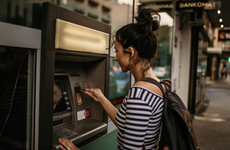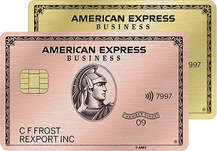Credit Cards
Card Type
- 0% APR Credit Cards
- Balance Transfer Credit Cards
- Travel Credit Cards
- Airline Credit Cards
- Cash Back Credit Cards
- Rewards Credit Cards
- Business Credit Cards
- Best Credit Card Sign-Up Bonuses
- No Foreign Transaction Fee Credit Cards
- No Annual Fee Credit Cards
- Low Interest Credit Cards
- Hotel Credit Cards
- Gas Cards
- Student Credit Cards
- Secured Credit Cards
- Prepaid & Debit Cards
Card Issuer
Bankrate's promoted cards from our partners for May 2024
Here are some of our most popular credit card offers this month. Whether you are interested in a lower interest rate, travel rewards, cash back or other perks, we can help you find the right credit card from our partners. The listings that appear on the website are from credit card companies from which Bankrate receives compensation. This compensation may impact how and where products appear on this site. Terms Apply.
Credit Card Tools
Credit card compare tool
- Compare up to 3 credit cards from our partners using the side-by-side card comparison tool below.
Spender type tool
- Get personalized recommendations from our partners based on your credit score and spending habits.
Credit Card Reviews
Editor's Picks
Latest Articles
-

Why I finally signed up for a 2% cash back card
Here’s how I’m benefiting from a 2 percent cash back credit card.
5 min read Apr 26, 2024 -

I received a store card I didn’t apply for. Should I cancel it?
What do you do if you receive a credit card you didn’t apply for?
4 min read Apr 25, 2024 -

Do credit card rewards, points and miles expire?
Follow these tips for easy ways to keep your credit card rewards from expiring.
10 min read Apr 25, 2024 -

7 tips for keeping your business finances organized
Set yourself up for success with these tips to organize your business finances.
5 min read Apr 25, 2024 -

Are travel credit cards worth it?
Travel credit cards offer great benefits, including valuable points and miles rewards. It’s important to consider some factors before deciding if a travel credit card is right for you.
8 min read Apr 25, 2024 -

Chase transfer partners: How to get the best value
If you’re looking to increase the value of your Chase Ultimate Rewards points, transferring your points to a Chase airline or hotel partner is a lucrative solution.
11 min read Apr 25, 2024 -

How to get cash from a credit card at the ATM
Taking money out of a credit card at the ATM is one way to get cash quickly — but it’s costly.
5 min read Apr 24, 2024 -

Current credit card interest rates
View current credit card rates based on Bankrate.com’s weekly national survey of large banks and thrifts.
1 min read Apr 24, 2024 -

What to know before closing a credit card with a balance
There are advantages to keeping a credit card account, though you can always close one.
4 min read Apr 24, 2024 -

Is it illegal to use a business credit card for personal expenses?
No, but mixing business and personal expenses can have some serious consequences.
6 min read Apr 24, 2024







